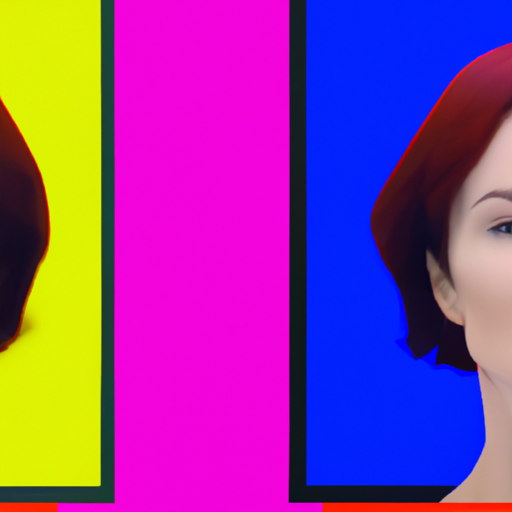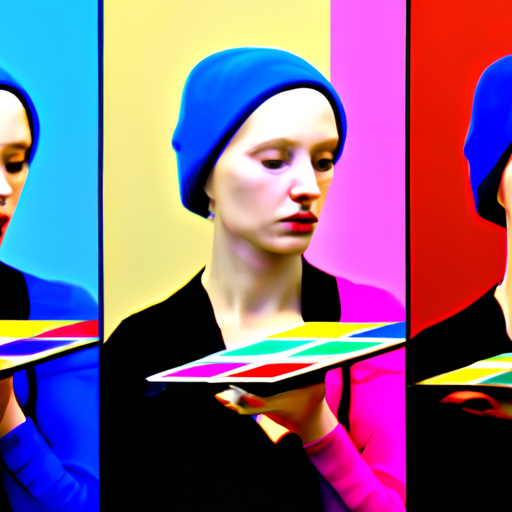
-
Table of Contents
Exploring Symmetry and Asymmetry in Graphics

Introduction
Graphics play a crucial role in various fields, including design, advertising, and art. One of the fundamental elements that designers consider when creating visually appealing graphics is the use of symmetry and asymmetry. These two design principles have distinct characteristics and can evoke different emotions and reactions from viewers. In this article, we will explore the concepts of symmetry and asymmetry in graphics, their applications, and the impact they have on the overall visual experience.
The Power of Symmetry
Symmetry refers to a balanced arrangement of elements in a design. It is a fundamental principle that has been used in art and design for centuries. Symmetrical designs are visually pleasing and create a sense of order and harmony. Our brains are naturally wired to appreciate symmetry, as it is often associated with beauty and perfection.
One of the most famous examples of symmetry in graphics is Leonardo da Vinci’s Vitruvian Man. The drawing depicts a man with his arms and legs spread out, fitting perfectly within a circle and a square. The symmetrical composition of the drawing creates a sense of balance and proportion, making it visually appealing.
Symmetry can be classified into different types:
- Reflectional Symmetry: Also known as mirror symmetry, this type of symmetry occurs when an object can be divided into two equal halves that are mirror images of each other. For example, the wings of a butterfly or the face of a human.
- Rotational Symmetry: This type of symmetry occurs when an object can be rotated around a central point and still maintain its original form. A classic example is a snowflake, which exhibits rotational symmetry.
- Translational Symmetry: This type of symmetry occurs when an object can be shifted or translated without changing its overall appearance. Patterns such as stripes or grids often exhibit translational symmetry.
Symmetry is widely used in various design disciplines. In architecture, symmetrical buildings and structures are often seen as grand and majestic. The Taj Mahal in India is a prime example of symmetrical architecture, with its perfectly balanced design and mirrored layout.
In graphic design, symmetry is often employed to create visually appealing logos, posters, and websites. Companies like Apple and Nike use symmetrical designs in their logos to convey a sense of balance, elegance, and professionalism.
The Allure of Asymmetry
While symmetry is often associated with beauty and perfection, asymmetry can be equally captivating. Asymmetrical designs break away from the traditional sense of balance and create a dynamic and visually interesting composition. They can evoke a sense of movement, energy, and uniqueness.
Asymmetry can be achieved by intentionally placing elements of different sizes, shapes, or colors on either side of a design. This deliberate imbalance creates tension and visual interest, capturing the viewer’s attention and encouraging exploration.
One famous example of asymmetry in art is Pablo Picasso’s painting “Guernica.” The painting depicts the horrors of war and uses asymmetrical composition to convey a sense of chaos and unease. The placement of disjointed and distorted figures creates a powerful emotional impact on the viewer.
Asymmetry can also be found in modern graphic design. Many contemporary logos and advertisements utilize asymmetrical layouts to stand out and create a memorable visual experience. The asymmetrical design of the FedEx logo, with the hidden arrow between the “E” and “x,” adds an element of surprise and intrigue.
The Role of Symmetry and Asymmetry in User Experience
Both symmetry and asymmetry play a significant role in user experience design. Understanding how these design principles impact the user can help create more effective and engaging interfaces.
Symmetry is often used in user interfaces to create a sense of familiarity and ease of use. When elements are symmetrically arranged, users can quickly understand the layout and navigate through the interface effortlessly. Symmetry can also help establish visual hierarchy, with important elements placed at the center or along the axis of symmetry.
On the other hand, asymmetry can be used to draw attention to specific elements or create a sense of progression. Asymmetrical layouts can guide the user’s eye through a design, leading them to important information or actions. However, it is essential to strike a balance between asymmetry and usability. Too much imbalance can lead to confusion and a poor user experience.
Case Studies: Symmetry vs. Asymmetry
Let’s examine two case studies that highlight the impact of symmetry and asymmetry in graphics:
Case Study 1: Website Design
In this case study, we compare two website designs for an e-commerce platform: one utilizing symmetry, and the other employing asymmetry.
The symmetrical design features a centered logo, a grid-based product listing, and balanced navigation menus. The overall layout is clean and organized, providing a sense of trust and professionalism. Users can easily find what they are looking for and navigate through the website effortlessly.
The asymmetrical design, on the other hand, uses a dynamic layout with overlapping elements, varying sizes, and unexpected placements. This design creates a sense of excitement and curiosity, encouraging users to explore different sections of the website. However, some users may find it challenging to locate specific information due to the lack of a clear visual hierarchy.
Both designs have their merits and target different user preferences. The symmetrical design appeals to users who value simplicity and ease of use, while the asymmetrical design caters to users who seek a unique and visually stimulating experience.
Case Study 2: Poster Design
In this case study, we compare two poster designs for a music festival: one utilizing symmetry, and the other employing asymmetry.
The symmetrical poster design features a centered title, balanced typography, and evenly distributed images of the performing artists. This design creates a sense of order and elegance, appealing to a wide audience. However, it may lack the excitement and energy that asymmetrical designs can convey.
The asymmetrical poster design uses overlapping elements, varying sizes, and diagonal compositions. This design creates a sense of movement and captures the dynamic nature of the music festival. It appeals to a younger audience who seeks a more unconventional and visually engaging experience.
Both designs effectively communicate the event’s information, but they evoke different emotions and target different demographics.
Conclusion
Symmetry and asymmetry are powerful design principles that can greatly impact the visual experience and user perception. Symmetry creates a sense of balance, harmony, and familiarity, while asymmetry adds dynamism, uniqueness, and visual interest. Understanding when and how to use these principles is crucial in creating effective
